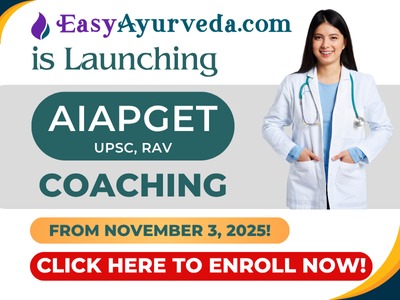Article by Dr. Raghuram YS MD (Ay) and Dr. Manasa S, BAMS
We know that Haridra – Curcuma longa/turmeric is adya dravya i.e. the main, most important and highly praised herb/medicine in the treatment of Prameha – diabetes. We can see that Acharya Sushruta has mentioned its importance in the context/chapter dealing with the treatment of Arshas – piles (hemorrhoids).
While the verses in this chapter give us clear information about the main herbs used in the treatment of Arshas as compared to those used in the treatment of Kustha (skin disorders) and Prameha (diabetes), as we read the lines. But when we read between the lines of these verses, we gain vital information.
the verses
The
See More
हरिद्रायाःप्रयोगza
क्षारागीनातिवर्तनmin See More
Reference – Sushruta Chikitsa Sthana, Chapter 6 – Arsha Chikitsitam, Verses 19, 20 (Su.Chi.6/19, 20)

Meaning
All types of Kustha – skin diseases would be cured with the use of Khadira – Acacia catechu and Bijaka (Vijayasara – Pterocarpus massupium).
Similarly, all types of Arshas – hemorrhoids would be cured by using Vrukshaka/Kutaja – Holarrhena antidysenterica and Aruskara – Bhallataka – Semecarpus anacardium.
All varieties of Arshas – hemorrhoids would be cured by the use of Kshara – alkali (alkali cauterization) and Agni – fire (fire marking or fire cauterization), just as sixteen types of Prameha – curable diabetes would be cured by the use of Haridra – Curcuma longa / turmeric.
While in this context we can see that the herb of choice has been mentioned for three different conditions – Khadira and Bijaka for Kustha, Kutaja and Bhallataka for Arshas and Haridra for Prameha, we might miss something important in the second paragraph if we just read the lines.
Between the lines
Just as Haridra is the best medicine for Prameha, kshara and agni are the best procedures for arshas. But note that Acharya Sushruta has equated one herb with two parasurgical techniques/procedures.
Kshara and Agni Karmas are an integral part and best part of the surgical practice of Ayurveda, even today.
Parasurgical effect/Importance (parasurgery like effect) of Haridra in the treatment of Prameha
In other words, Haridra is as effective as Kshara Karma or Agni Karma in dealing with Prameha.
Haridra is as effective as the parasurgical methods used to treat Arshas.
“Haridra is like a parasurgical approach to treating Prameha root.”
Haridra in real terms is not a parasurgical method; It is a herb and medicine of choice in the treatment of curable Pramehas. But from Acharya Sushruta’s analogy of Kshara Karma and Agni Karma (both are parasurgical methods) by comparing their effects in the treatment of Arshas with the effect of Haridra in the treatment of Prameha, I have tried to mathematically equate Haridra with Kshara and Agni Karma and their impact on the disease i.e. the parasurgical effect.
We need to observe that Acharya Sushruta highlights the use of Haridra in Prameha and makes a statement in the context of Arsha Chikitsa.
The word Arshas comes from the root ‘Ari’ which means enemy. What worries you as an enemy is Arshas..
In the same context, Acharya Sushruta offers an analogy in terms of treatments including Kustha and Prameha in the context.
Why only these diseases?
The reason is that Kustha and Prameha also bother the person as ‘ari’ i.e. enemy. All of these diseases need a quick and strategic approach.
Disclaimer
I have given my interpretation and have given this as an example of how reading between the lines and interpreting them helps us understand the meaning of the matter conveyed in the verses of a treatise.
I have mentioned diabetes where I mentioned Prameha, which is just for ease of understanding.
The interpretations are my own and not established, just my points of view.
I have not claimed that Haridra alone is sufficient to treat Prameha; he was performing Acharya’s line.



